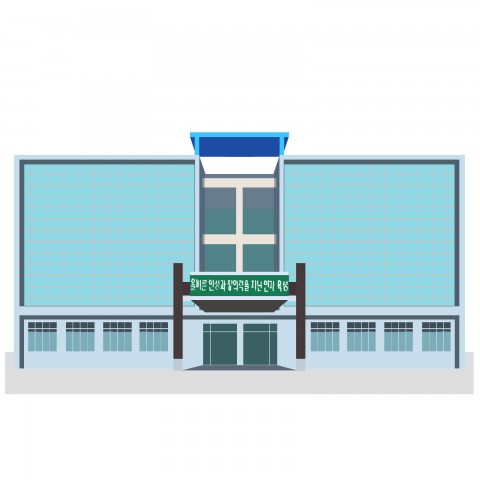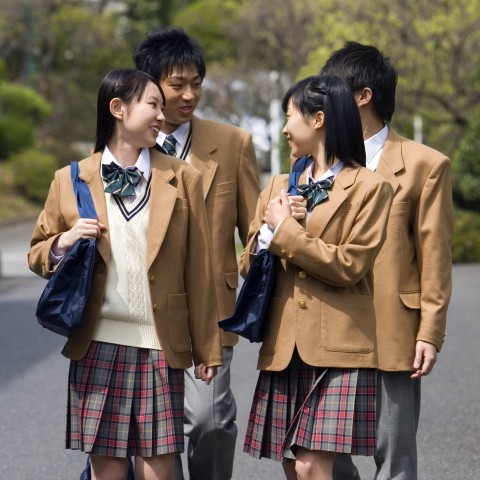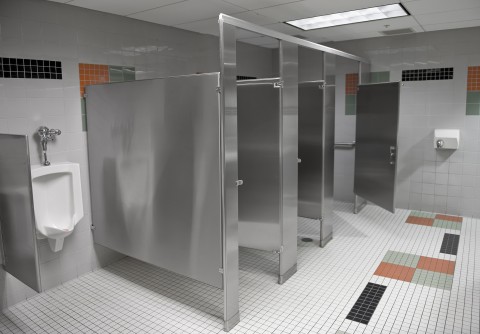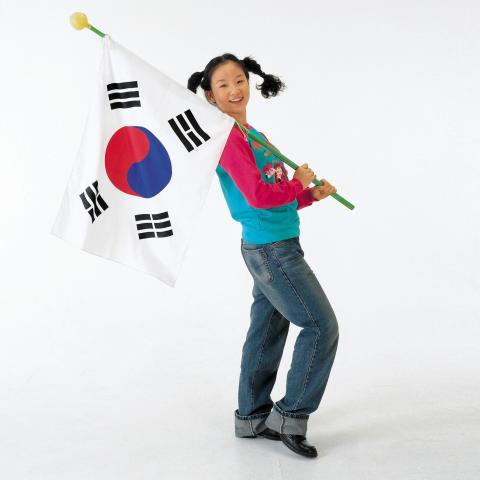Whether you’re planning to teach English at a public or private school in South Korea, once you start teaching English at school, you’ll definitely notice that there are many differences between Korea and your country. You may find this article helpful if you want to know six vital Korean school rules along with the important cultural insight of each rule. Let’s have a look at Korean school rules with KoreanClass101!
1. 6 Korean School Rules that You Need to Know
1- You Don’t Go to School on Saturdays, But You are Expected to do Yaja
Students used to go to school on Saturdays; this was simply to maximize the study time. However, this law changed in 2000, meaning that students don’t go to school on Saturdays anymore in South Korea.
Although you no longer need to go to school on Saturdays, you are expected to attend 야자 (yaja). This is an abbreviation for 야간자율학습 (yaganjayulhakseup) meaning “Night self-learning” which is a self-learning program held at school. This system used to be mandatory back in the old days, however nowadays students can choose whether to do 야자 (yaja) or not. What you need to do during 야자타임 (yajataim) or “night self-learning time” is to study in a quiet classroom. You can do your 숙제 (sukje) or “homework,” or work on the areas that you need to improve on by planning your own study strategy.
Also, if your friend is good at a subject that you’re not so good at, she or he can teach you the subject during 야자타임 (yajataim) as well. If you’re in the last year of high school or middle school, you’ll most likely do 야자 (yaja) voluntarily.
Vocabulary List
※ Click on a word to practice your pronunciation.
- 야자 (yaja): “night self-learning” [Image]
- 야자타임 (yajataim): “night self-learning time”
- 숙제 (sukje): “homework”
2- You Need to Take Off Your Shoes when Entering the School
When you enter a house in South Korea, you must take off your shoes before entering the house. This principle applies to schools in South Korea as well. Once you enter the school, you must take off your shoes and wear 슬리퍼 (seullipeo) meaning “slippers” or 실내화 (sillaehwa) meaning “indoor shoes.”
신발장 (sinbaljang) or “the shoes cabinets” are placed by the entrance of the school building. This is done in order to keep the floor clean. If you forget to wear 슬리퍼 (seullipeo) or 실내화 (sillaehwa)—because you washed them at home, for example—you’ll most likely lose a few points for not abiding by the school rule.
Depending on the school, the choice of the slipper or indoor shoe design or model differs. Therefore, it’s important to wait until the school announces which model and design you need to wear. In order to ensure purchasing the right indoor shoes, you’ll need to go to 문방구 (munbanggu) or the “stationery store,” which is located right outside the school, to purchase these models.
Vocabulary List
※ Click on a word to practice your pronunciation.
- 슬리퍼 (seullipeo): “slippers” — [Image]
- 실내화 (sillaehwa): “indoor shoes” — [Image]
- 신발장 (sinbaljang): “shoes cabinet”
- 문방구 (munbanggu): “stationary store” — Synonym is 문방구점 (munbanggujeom)
- Do you want to improve your vocabulary skills? Download our free PDF Lessons.
3- Teachers and 선도부 (seondobu) will Stand at the Doorway to Check Your Uniform
Imagine every time you enter the school door, there’ll be about five to six students, and a teacher, who will look at each student from head to toe to ensure they’re wearing their uniform properly. It does sound scary, doesn’t it?
Most of the time, the teacher who does this is 체육선생님 (cheyukseonsaengnim) or a “physical education teacher” (a.k.a. the scariest teacher at school) and called 학주 (hakju), short for 학생주임 (haksaengjuim). Also, the students who are doing this are either 반장 (banjang) meaning “class president” or 부반장 (bubanjang) meaning “class vice president” from the final year of school. They are the most respected students among others because they are known as the top students and called 선도부 (seondobu) or 바른생활부 (bareunsaenghwalbu) meaning ‘leading group’ literally which is similar to a student council.
They’ll check each student for the following:
- Isn’t wearing any 악세사리 (aksesari) or “accessories,” including invisible plastic earrings
- Isn’t wearing any 화장 (hwajang) or “makeup,” including whitening sunscreen
- Is wearing hair style that’s in line with the school rules
- Length of the skirt is below knees
The rules differ depending on which school you go to; some schools may be a lot stricter than other schools, especially if you go to only girls’ or boys’ school. Also, if you neglect to follow a rule, you’ll end up losing points, which will affect your final score at the end of the semester or year. Some things that may cause you to lose points are:
- If you wear earrings, piercings, bracelets, and so on: -5 points
- If you’re not wearing your nametag: -3 points
- If you wear makeup: -5 points
- And the list could go on
This is just to give you an idea of how students lose their marks; these points differ depending on the school. You don’t want to lose marks for small things like this, so students do their best to follow the rules. During the final exams, students become extremely sensitive to their grades; therefore, sometimes a teacher will make them run the 운동장 (undongjang) or “schoolyard” a number of times for punishment, instead of making them lose points.
Vocabulary List
※ Click on a word to practice your pronunciation.
- 선배 (seonbae): “one’s senior in school; senior”
- 체육선생님 (cheyukseonsaengnim): “physical education teacher”
- 악세사리 (aksesari): “accessories”
- 화장 (hwajang): “makeup” — Synonym is 메이크업 (meikeueop)
- 반장 (banjang): “class president”
- 운동장 (undongjang): “playground”
4 – Your Height Matters when it Comes to Choosing a Seat
Depending on which city you’re from, the number of students in a class differs, ranging from 15 to 35 students. Did you know that you can’t sit anywhere you want to at any school (accept universities) in South Korea? Each student is allocated to a seat and this is done by how tall you are compared to other students. The method for doing this is that students need to line up in order of height. Then, each student will be seated in their height order. Those who are shorter end up sitting in the front row, and those who are taller end up sitting in the last row.
In addition, you’ll have a personal 출석번호 (chulseokbeonho), meaning “attendance number” literally, throughout the year and this is done by height order as well. For example, if there are 35 students in your class and you’re the shortest, then your number will be 일번 (ilbeon) meaning “number 1” and if you’re the tallest, your personal number will be 삼십오번 (samsibobeon) meaning “number 35.”
It’s important to remember your personal number because teachers call you by either your name or your personal number. For example, let’s say you’re in a 수학교실 (suhakgyosil) or “math class” and the teacher wrote down two mathematical equations to be solved by students. Today is 8월 15일 (parwol siboil) meaning “August 15th”; who will most likely go to the front and solve the questions? That’s right. The two students whose personal numbers are number 8 and 15.
Also, the teacher may order students to do something, such as cleaning or other tasks, by 짝수 (jjaksu) or “even numbers” and 홀수 (holsu) or “odd numbers” as well. Therefore, having your personal number is very important at school. Also, keep in mind that you’ll receive a different number every year.
Vocabulary List
※ Click on a word to practice your pronunciation.
- 수학 (suhak): “math”
- 교실 (gyosil): “class”
- 8월15일 (parwol siboil): “August 15th”
- 짝수 (jjaksu): “even numbers”
- 홀수 (holsu): “odd numbers”
- KoreanClass101 has a free lesson on how to calculate numbers in Korean.
5- No Dating Your Schoolmate
Teachers believe that dating in school will affect students’ study, therefore dating your schoolmate is not allowed during your studies. This may not be obvious if you attend only girls’ or boys’ high school, but if you attend co-schools, you’ll need to be extra careful not to get caught. Dating your schoolmate is a serious issue at school, resulting in 징계 (jinggye’) meaning “disciplinary punishment” or 퇴학 (toehak) meaning “expel from school.”
81% of middle and high schools don’t allow students to date anyone in South Korea. Unfortunately, dating in school is perceived as unethical behavior. Schools sometimes survey students to report students who are dating in school secretly, and they will be rewarded. Also there was a big issue in 2011, when a school surveyed the students to report same-sex dating.
Vocabulary List
※ Click on a word to practice your pronunciation.
- 학교 (hakgyo): “school”
- 연애 (yeonae): “dating”
- 징계 (jinggye): “disciplinary punishment”
- 퇴학 (toehak): “expel from school”
6- You Need Permission to go to the Bathroom and Must Take Your Own Sanitary Products
When you want to go to the 화장실 (hwajangsil) or “bathroom,” you need to ask permission from a 선생님 (seonsaengnim) or “teacher.” All you need to do is raise your hand to catch attention from the teacher and ask whether you can go to the bathroom. Unless you’re in the middle of an exam, most of the time the teachers will let you go to the bathroom.
Here’s the phrases you can use:
선생님, 화장실 가도 돼요?
Seon-saeng-nim, hwa-jang-sil gado dwae-yo?
“Teacher, can I go to the bathroom?”
Also, there’s no 휴지 (hyuji) or “toilet paper” available at school, therefore it’s your responsibility to bring your own sanitary products to South Korean schools. But don’t worry; you can easily find toilet paper in your classroom that you can use. (Yes, we use toilet paper for many purposes, such as blowing our nose or wiping dirty stuff off the desk, and so on.)
Vocabulary List
※ Click on a word to practice your pronunciation.
- 화장실 (hwajangsil): “bathroom”
- 선생님 (seonsaengnim): “teacher”
- 휴지 (hyuji): “tissue” — Synonym is 두루마리 휴지 (durumari hyuji) meaning “toilet paper”
2. Bonus Rules: An Old Rule and Additional Rules
1- Students Used to Bow to a Teacher Every Class
This rule became prohibited a few years ago, but students used to bow to a teacher in every class, before and after the class in school. Students were expected to sit and prepare a textbook and a notebook on the desks before class. Unlike some countries where students need to move from class to class for their subjects, students in South Korea have their own classroom for themselves, which means that teachers need to move around instead.
When a teacher arrived to a classroom, 반장 (banjang) or “class president” would stand and say 차렷 (charyeot) meaning “attention” loudly so everyone can hear. Then the class president will either say 인사 (insa) meaning “greet” or 경례 (gyeongnye) meaning “salute.” Then everyone has to say 선생님 안녕하십니까 (seonsaengnim annyeonghasimnikka) meaning “hello teacher” before the class, and 선생님 안녕히 가십시오 (seonsaengnim annyeonghi gasipsio) “goodbye teacher” after the class.
However, this was banned recently because people believed that this was too conservative and it doesn’t help a teacher and the students establish a good relationship.
Vocabulary List
※ Click on a word to practice your pronunciation.
- 반장 (banjang): “class president”
- 선생님 안녕하십니까 (seonsaengnim annyeonghasimnikka): “hello teacher” (honorific expression)
- 선생님 안녕히 가십시오 (seonsaengnim annyeonghi gasipsio): “goodbye teacher” (honorific expression)
- For people who want to learn -> Korean honorific expressions
2- And there are Many More Rules
There are many more rules that South Korean students need to abide by:
-
You Cannot Alter the Length of a Skirt or the Width of a Pair of Pants
-
You Must Wear what the School Tells You to
-
The School will Decide which Hairstyle to do
치마길이 (chimagiri) or “the length of skirt” has to cover half the knee; if it’s shorter than this, you’ll get in trouble. However, this really depends on the school. These days, students can alter their school uniforms to suit their body shape.
There are three ways to wear your school uniforms in South Korea. The default school uniforms are 동복 (dongbok) or “winter uniform” and 하복 (habok) “summer uniform.” In between, there’s 춘추복 (chunchubok) or “spring/autumn uniform.” Normally, each uniform has its set duration, so even though the weather becomes extremely hot, if you’re in the period of wearing 동복 (dongbok) or “winter uniform,” you have to wear the winter uniform.
Nowadays, students are allowed to do many different hairstyles. Girls can dye their hair, curl their hair, and untie their hair. Compare this to the old times when every girl had to have short hair, which must not grow longer than 3 cm (1.2 inches) below their ears.
Boys can grow their hair longer than they could a few decades ago, when every boy had to shave their hair completely. This rule also depends on which school you go to; some conservative schools still follow the traditional way of hairstyle. 두발자유화 is something that Korean students are fighting for, as they believe that free hairstyle will allow them to express who they are, and this topic is still in debate.
Some schools still follow the traditional ways of disciplining students and this can be problematic for some students. Although the majority of Koreans have naturally black hair, there are some exceptions; there are people with natural brunette and even light brown hair, almost blond. Others have naturally curly hair. Unfortunately, those students will have to abide by the rule by straightening their hair or dying it black, although they were born this way.
Vocabulary List
※ Click on a word to practice your pronunciation.
-
치마길이 (chimagiri): “the length of skirt”
동복 (dongbok): “winter uniform”
하복 (habok): “summer uniform”
춘추복 (chunchubok): “spring/autumn uniform”
두발자유화 (dubaljayuhwa): “liberalization of the hair code”
3. Nevertheless, We are Getting Better!
Things have changed a lot. Students don’t go to school on Saturdays anymore, and haven’t since 2000. 야자 (yaja) used to be mandatory for everyone in middle and high school, but now students can decide whether they want to attend it or not. Students’ hairstyles were limited too, and students with brunette hair had to dye it black just because it was the school rule. But this doesn’t apply to schools anymore. There used to be school corporal punishment, but it’s prohibited now. Many school rules have been changed and there will still be more rules to be changed in the future.
4. How KoreanClass101 Can Help You with Korean
KoreanClass101 is here to help you learn not only the Korean language, but also Korean culture. Therefore, our study materials aren’t simply teaching you how to memorize Korean; we’re also focused on providing study materials for students to learn the language in a fun way, and most importantly, provide the most relevant cultural insights.
Also, KoreanClass101 has free study materials for you to study, whether you’re an absolute beginner or a more advanced learner. So why not make your lifetime account today and learn Korean with us?
















